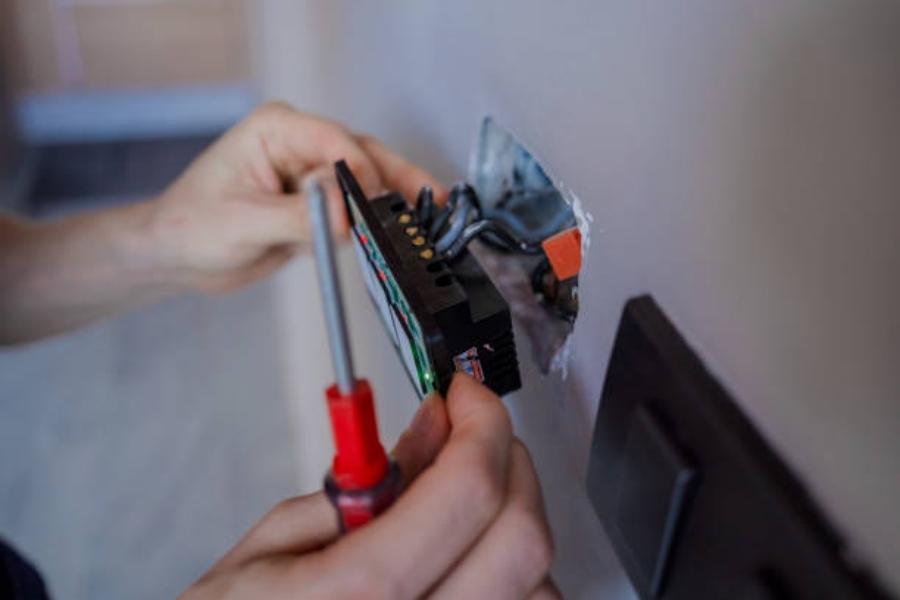Table of Contents

Introduction
electrical push button switches are widely used in various applications that require the control of an electrical circuit. A push button switch is a type of switch that is actuated by pressing a button. It can be used to turn on or off a circuit, to change the direction of a motor, or to trigger a specific action in a control system. In this article, we will discuss the functions and applications of electrical push button switches in detail.
Function of Electrical Push Button Switches
Electrical push button switches are designed to control electrical circuits. They have two states, normally open and normally closed, which control the flow of electricity. When the button is pressed, the switch changes state, allowing current to flow through the circuit. When the button is released, the switch returns to its original state, cutting off the current flow. Push button switches are commonly used in control systems, such as machines, vehicles, and industrial equipment.
Types of Electrical Push Button Switches
Electrical push button switches come in various types, each with its own unique features. Some of the common types include:
- Momentary push button switch: This type of switch returns to its original state when the button is released.
- Maintained push button switch: This type of switch stays in the position where it was last pushed until it is pushed again.
- Single pole double throw (SPDT) push button switch: This type of switch has one input and two outputs, which can connect to two different circuits.
- Double pole double throw (DPDT) push button switch: This type of switch has two inputs and two outputs, which can connect to two different circuits simultaneously.
Applications of Electrical Push Button Switches
Electrical push button switches are used in a wide range of applications, such as:
- Machinery: Push button switches are commonly used to control machinery, such as conveyors, presses, and lathes.
- Vehicles: They are used in vehicles to control lights, horns, and other accessories.
- Lighting: Push button switches can be used to control lighting systems, such as in homes, offices, and industrial buildings.
- Control systems: They are used in control systems to trigger specific actions, such as opening or closing valves in a pipeline system.
Advantages of Electrical Push Button Switches
Electrical push button switches offer several advantages over other types of switches, such as:
- Precise control: Push button switches provide precise control over electrical circuits, allowing for accurate and repeatable actions.
- Easy to use: They are easy to use and require minimal training to operate.
- Durable: Push button switches are durable and can withstand harsh environments.
- Flexible: They can be used in a wide range of applications, making them a versatile choice for many industries.
Disadvantages of Electrical Push Button Switches
Despite their advantages, electrical push button switches also have some disadvantages, such as:
- No feedback: Unlike other types of switches, push button switches do not provide any feedback to the user, making it difficult to determine if the switch has been triggered.
- Cost: Push button switches can be more expensive than other types of switches, especially if they are designed for harsh environments.
- Complexity: Some push button switches can be more complex to operate and require more training to use effectively.
How to Choose an Electrical Push Button Switch
When choosing an electrical push button switch, there are several factors to consider, such as:
- Application: The switch should be designed for the specific application, such as industrial machinery or lighting control.
- Environment: The switch should be designed to withstand the environment where it will be used, such as high temperatures or corrosive chemicals.
- Functionality: The switch should have the required features, such as momentary or maintained action, and should be easy to use.
- Cost: The switch should be within your budget and provide good value for its price.
Installation of Electrical Push Button Switches
Installing an electrical push button switch requires some basic knowledge of electrical wiring. The switch should be installed in a safe and accessible location and wired according to the manufacturer's specifications. It is important to follow all electrical safety guidelines to prevent injury or damage to the equipment.
Maintenance of Electrical Push Button Switches
Regular maintenance is required to ensure the proper operation of electrical push button switches. This includes cleaning the switch contacts, inspecting the wiring connections, and replacing any worn or damaged components. It is also important to follow the manufacturer's recommended maintenance schedule to ensure the longevity of the switch.
Conclusion
Electrical push button switches are an important component in many industrial and electrical applications. They offer precise control, flexibility, and durability, making them a versatile choice for many industries. By understanding the functions and applications of push button switches, you can choose the best switch for your specific needs and ensure its proper installation and maintenance.
